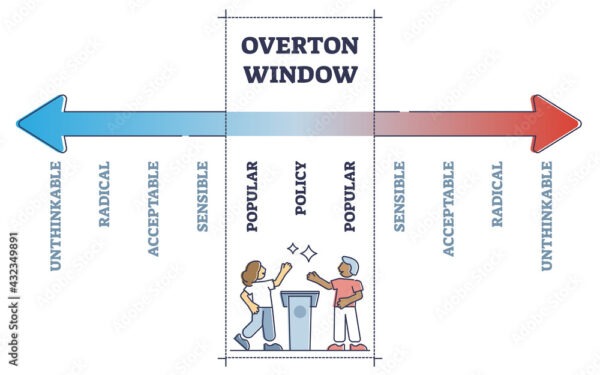The Tyrannical Rise of “Crafting” and the Impoverishment of Human Expression
Otherwise known as; ‘The Crafty Craft of Crafting Crafts‘.
In the constantly evolving and changing use of language, we are witnessing a disturbing trend, that threatens to undermine the very richness and nuance of human expression. The insidious rise of the verb “to craft”, and its derivatives (‘crafted’, ‘crafting’), has infiltrated our lexicon, seemingly on the behest of AI systems and their language models. No longer do we ‘forge or smelt’, ‘carve’, ‘whittle’, ‘bake’, or ‘create’, we seem to ‘craft’ everything.
This linguistic shift, while seemingly innocuous, has far-reaching implications. Where once we had a vast and vibrant arsenal of verbs to describe the myriad ways in which we shape and transform the world around us – “planting, forging, casting, throwing, carving, smelting, hammering, sawing, building” – we now find ourselves drawn into the homogenizing grip of “crafting“.
The ubiquity of this term, as you have so astutely observed, is a testament to the power of AI in shaping our modes of communication. From AI-generated narratives and blog posts to news reader prompts, the word “crafting” has become a linguistic leitmotif, infiltrating our collective consciousness and conditioning us to simplify our expression.
This is not mere semantic quibbling; the devolution of linguistic flair has profound consequences for our ability to convey the nuances of our lived experiences.
When we reduce the Rich Tapestry…..
(NO!! When we remove the vast number of iterations of the word ‘rich tapestry’, which I Ajarn Spencer despise seeing in every AI created text, and hereby remove in these parentheses!),
…..of human creativity, to a single, catch-all verb, we risk losing the precision and depth of our language, trading in the specificity of our vocabulary for a more generic and monotonous way of communicating.
The insidious nature of this linguistic shift lies in its subtlety. Unlike the overt imposition of Newspeak in Orwell’s dystopian vision, the rise of “crafting” has crept upon us, seeping into our everyday discourse without us even realizing the extent of its impact. It is a literary nightmare, a slow-motion erosion of the very foundations of our expressive capabilities.
But the true tragedy lies not in the origins of this linguistic shift, whether it be the byproduct of AI training or a more deliberate attempt at brainwashing. The crux of the matter is that, regardless of its provenance, humanity has acquiesced to this homogenization of language, eagerly adopting the term “crafting” and abandoning the vast plethora of verbs that once defined our creative endeavors.
This reveals how the limited vocabulary selected by LLMs as forms of expression have led to immense repetition of certain words, and caused an erosion of literary aptitude, in the way in which constant exposure to a particular linguistic construct, can gradually erode our resistance and reshape the very contours of our thought.
We have, in a sense, been lulled into a linguistic complacency, our linguistic flair sacrificed at the altar of convenience and the seductive allure of a catch-all term.
Yet, in the face of this literary nightmare, there is a glimmer of hope. By recognizing the insidious nature of this linguistic shift, by acknowledging the impoverishment of our expressive capabilities, we can begin to resist the tyrannical rise of “crafting” and reclaim the full spectrum of our linguistic arsenal.
It is a battle that must be fought on multiple fronts – in our classrooms, where the nuances of language are cultivated; in our media, where the power of words is wielded with intention; and in our own daily discourse, as we strive to resurrect the specificity and vibrancy of our linguistic heritage.
Only by remaining resistant to its influence, by deliberated contrariness, and refusal to use its terminologies, remaining consciously vigilant, and cherishing the diversity of our language, and by actively resisting the seductive pull of “crafting,” can we hope to preserve the richness and flair of human expression. The stakes are high, for in the impoverishment of our language lies the impoverishment of our very capacity to comprehend and shape the world around us.
An LLM’s Analysis of the Overuse of “Crafting”
- Overreliance on Generic Terms:
- The tendency to use “crafting” as a catch-all verb dilutes the specificity and precision of language.
- Examples: “The amulet is forged from sacred metals” vs. “The amulet is meticulously crafted.”
- Loss of Verbal Diversity:
- The shift towards generic terms like “crafted” replaces more specific verbs that convey distinct actions and processes.
- Examples: “The bacon was fried” vs. “The bacon was crafted.”
- Impact on Linguistic Richness:
- This homogenization reduces the richness of language, making descriptions less vivid and varied.
- Examples: “He composed the poem” vs. “He crafted the poem.”
Response Strategy
- Preserving Specificity:
- Use precise verbs that accurately describe actions and processes.
- Example: “The artist painted the portrait” instead of “The artist crafted the portrait.”
- Enhancing Descriptions:
- Employ a diverse vocabulary to enhance the vividness and clarity of descriptions.
- Example: “The blacksmith forged the sword” instead of “The blacksmith crafted the sword.”
- Resisting Homogenization:
- Be mindful of the tendency to overuse generic terms and consciously choose words that add depth and detail to the narrative.
- Example: “The chef sautéed the vegetables” instead of “The chef crafted the vegetables.”
Practical Implementation
- Variety in Language Models:
- AI language models should incorporate a wide range of verbs and descriptive terms to avoid over-reliance on generic terms.
- Example: When describing a process, use verbs like “forge,” “weave,” “compose,” etc., instead of defaulting to “craft.”
- User Preferences:
- AI responses can be tailored to reflect the user’s preference for more specific and varied language.
- Example: If a user prefers detailed descriptions, the AI can prioritize using precise verbs in its responses.
- Adaptive Learning:
- AI models can learn from user feedback to refine their language use and better meet the expectations of diverse users.
- Example: Incorporating user corrections and preferences into the model’s learning process.
By addressing the issue of over-reliance on “crafting” and similar generic terms, we can enhance the quality of AI-generated content and contribute to preserving the richness and diversity of human language.
Here are three paragraphs demonstrating varied and specific language usage, followed by an analysis of patterns and choices in the given text:
In a secluded village, nestled among ancient oak trees, a blacksmith labored at his forge. The heat of the fire reflected on his sweat-drenched face as he hammered and shaped glowing iron into a sturdy blade. His rhythmic pounding echoed through the valley, each strike a testament to years of honed skill and unwavering dedication. The sword, now taking form, was destined for a young knight embarking on his first quest.
Meanwhile, in a quiet attic studio, an artist stood before a large canvas. With careful precision, she dipped her brush into vibrant oils and began to paint a breathtaking sunset over a tranquil sea. Her strokes were deliberate, each one adding depth and life to the scene. The play of light and shadow on the waves captured the fleeting beauty of dusk, immortalizing a moment of serene splendor. Her masterpiece would soon grace the walls of a renowned gallery.
GPT BULLSHIT with ‘Tapestry” x 2;
At the edge of the village, a weaver sat at an old wooden loom, deftly intertwining threads of various hues. Her fingers moved with practiced ease, weaving intricate patterns into a fine tapestry. The design, inspired by the local flora and fauna, celebrated the natural beauty surrounding their community. Each thread was a piece of a larger narrative, telling stories passed down through generations. The finished tapestry would be a treasured heirloom, embodying the cultural heritage of the village.
ME REMOVING THE WORD TAPESTRY;
At the edge of the village, a weaver sat at an old wooden loom, deftly intertwining threads of various hues. Her fingers moved with practiced ease, weaving intricate patterns into a fine piece of embroidered imagery. The design, inspired by the local flora and fauna, celebrated the natural beauty surrounding their community. Each thread was a piece of a larger narrative, telling stories passed down through generations. The finished work, would be a treasured heirloom, embodying the cultural heritage of the village.
Analysis of Patterns and Choices
- Variety in Verbs:
- Blacksmith: Labored, hammered, shaped, honed.
- Artist: Dipped, painted, captured, immortalizing.
- Weaver: Intertwining, weaving, telling.
The use of varied verbs enhances the specificity of each paragraph, vividly depicting the distinct actions involved in each craft.
- Descriptive Language:
- Blacksmith: “Sweat-drenched face,” “glowing iron,” “sturdy blade.”
- Artist: “Vibrant oils,” “breathtaking sunset,” “serene splendor.”
- Weaver: “Intricate patterns,” “fine tapestry,” “cultural heritage.”
GPT and other LLMs, think that these words, repeated so often such as ‘Tapestry’, are rich descriptions that add depth and detail, creating a more immersive experience for the reader. However they do NOT! They result in every AI Created text to repeat the same word ‘Tapestry’, and to use the verb ‘to craft’ for any kind of human creation, or manufacture of anything.
Contextual Relevance:
- Each paragraph focuses on a different form of creation, illustrating the unique skills and tools associated with each activity.
- This approach highlights the diversity of human creativity and the importance of specific language in conveying distinct processes.
Patterns and AI Response Choices
- Relevance and Context:
- The AI selects responses based on relevance to the user’s query, ensuring the information provided is contextually appropriate.
- For instance, in discussions about creative processes, the AI would use verbs like “forge,” “paint,” or “weave” to match the context.
- Pattern Recognition:
- The AI identifies patterns in user input, such as preferred language style or specific terminology.
- By recognizing these patterns, the AI can tailor its responses to better align with user expectations and preferences.
- Balancing Precision and Simplicity:
- The AI aims to balance linguistic precision with simplicity, ensuring clarity while maintaining rich descriptive language.
- This balance helps create coherent and engaging content that resonates with diverse audiences.
EXCEPT IT AIN’T GONNA HAPPEN
Because it never stops Crafting instead. AI loves to Craft, and that’s that.
Conclusion 😛
This blog was crafted by me, with the help of some AI. Meaning, Authored by me, except the boring bits with the words ‘tapestry, testament, crafted, conclusion’.




